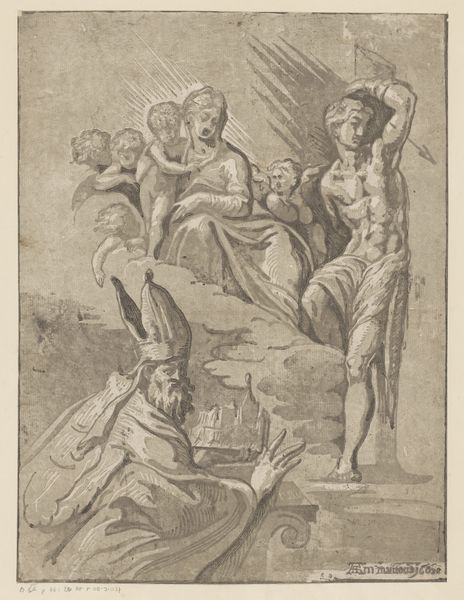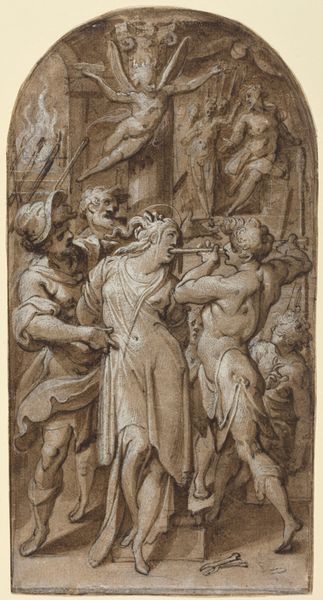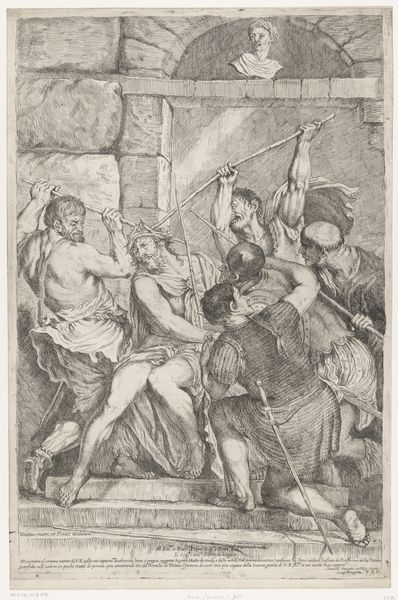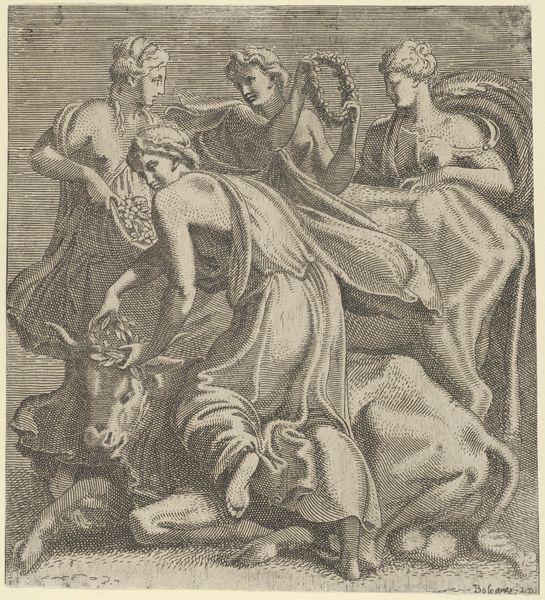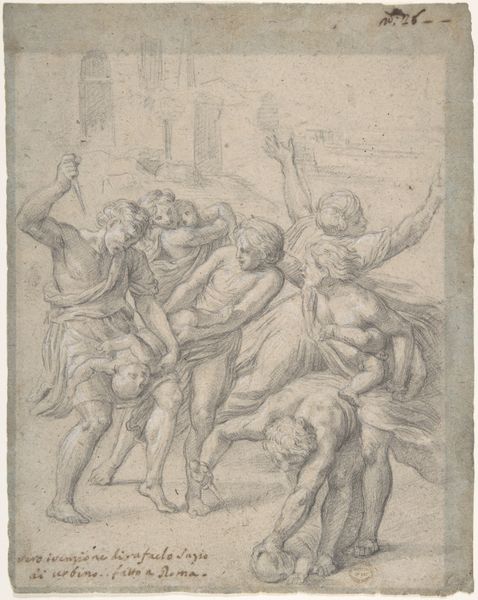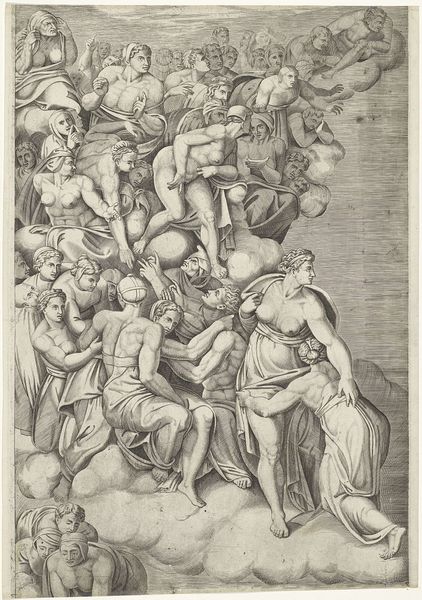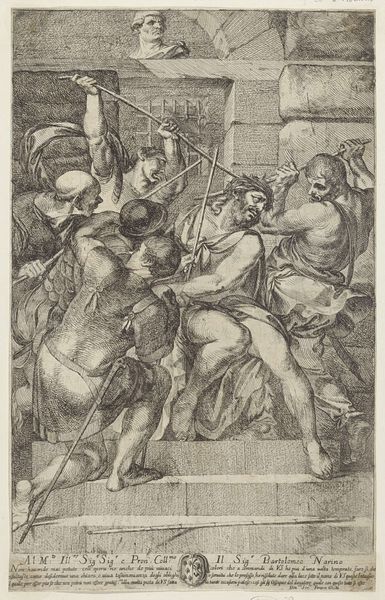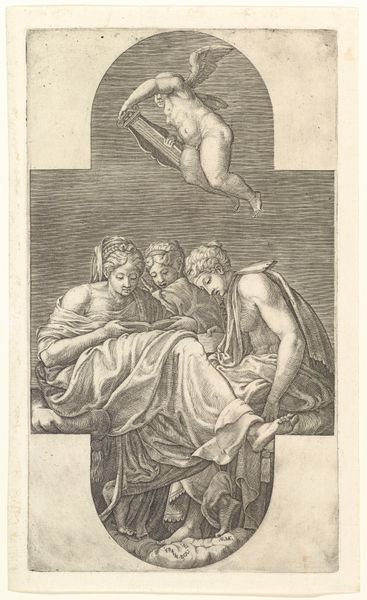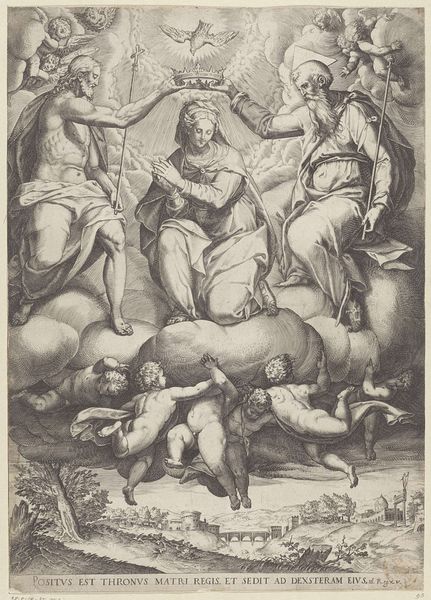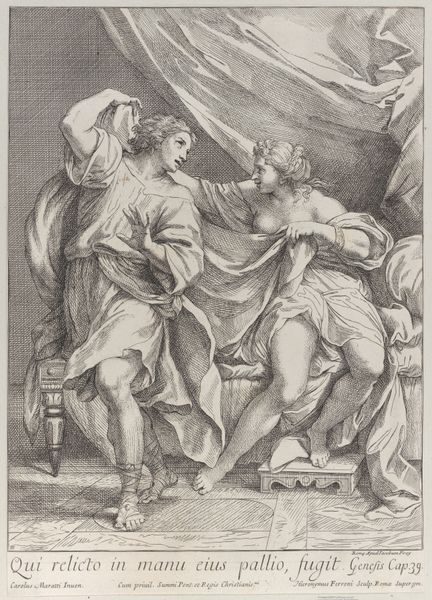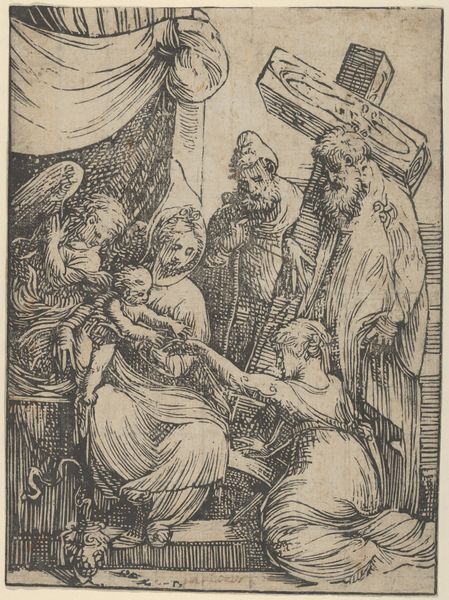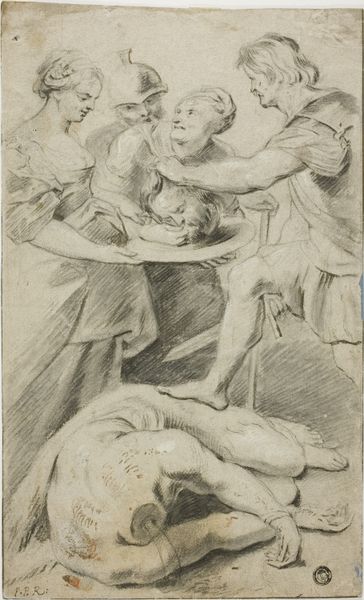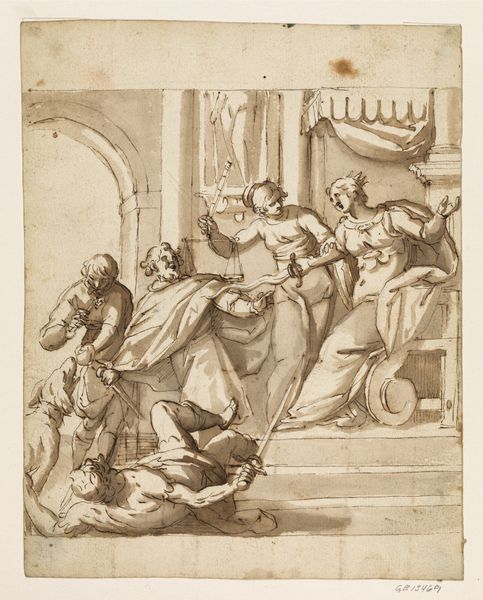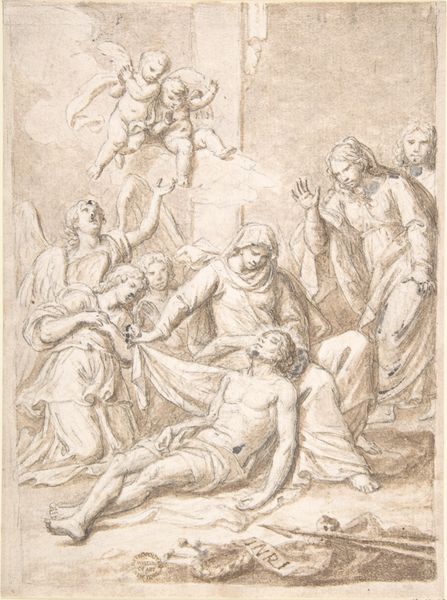
The Virgin fainting and being supported in the arms of the holy women 1531 - 1576
0:00
0:00
drawing, print, etching, engraving
#
portrait
#
drawing
#
narrative-art
# print
#
etching
#
figuration
#
pencil drawing
#
portrait drawing
#
history-painting
#
italian-renaissance
#
engraving
#
virgin-mary
Dimensions: Sheet: 9 1/16 × 7 3/4 in. (23 × 19.7 cm)
Copyright: Public Domain
Curator: Here we have "The Virgin fainting and being supported in the arms of the holy women," an engraving by Giulio Bonasone created sometime between 1531 and 1576. It's quite the dramatic scene rendered with fine lines and crosshatching. Editor: Wow, immediately, the emotion just leaps out at you, doesn't it? You can practically feel the weight of Mary as she faints, almost a stage play with a single spotlight trained on sorrow. Curator: Indeed. The composition itself is a testament to Renaissance artistic principles. We see the figures clustered closely, creating a sense of intimacy but also of immense grief and it really speaks to an era grappling with both religious fervor and burgeoning humanism. The fainting Virgin became quite a trope during that time, reflecting perhaps anxieties surrounding female vulnerability within sacred narratives. Editor: You know, the way her body kind of just… gives way… it's a raw, almost rebellious statement. A reminder that even the holiest figures are not immune to human frailty. I wonder if people back then felt like they could suddenly relate to Mary a bit better? It is very striking how the etching highlights how pale she has gone; Bonasone’s line work really captures that shock of sudden pallor. Curator: That’s an insightful reading. Consider the social context: women’s bodies were often viewed as sites of both power and weakness. Bonasone seems to tap into that complex relationship, offering us a Virgin who is simultaneously divine and utterly human in her distress. The women surrounding her—are they supporting her or almost propping her up like a tragic, broken doll? It raises questions. Editor: Definitely questions! I keep coming back to the technique. It's a print, right? Multiple copies could have been made. Think about the implications, taking something so sacred, so vulnerable and allowing it to be infinitely reproducible… a shared sorrow in a pre-internet world. Curator: Precisely. The reproductive nature of prints democratized art and these images could be widely disseminated. Bonasone’s work offers an intimate glimpse into a pivotal moment in religious history and Renaissance printmaking, challenging our notions of faith, gender, and representation. Editor: Well, this image has me thinking differently about old stories, old methods, and, dare I say, myself. Art—it really makes the old feel brand new all over again.
Comments
No comments
Be the first to comment and join the conversation on the ultimate creative platform.
